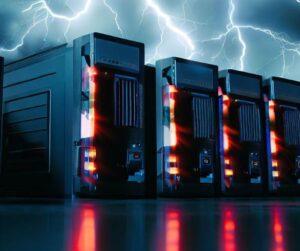The Importance of Power Distribution Systems in the Manufacturing Industry
The manufacturing industry heavily relies on a reliable and efficient source of energy to keep its operations running smoothly. Power distribution systems play a vital role in this industry by ensuring the proper delivery of energy to the various equipment and machinery used in the manufacturing processes. In this article, we will explore the importance of power distribution systems in the manufacturing industry and how they can contribute to optimizing energy efficiency.
Benefits of Efficient Energy Distribution
Efficient energy distribution in the manufacturing industry brings numerous benefits, both operationally and economically. Let’s take a look at some key benefits:
Improved reliability: Efficient power distribution systems ensure a constant and reliable supply of energy to production equipment. This prevents disruptions in the production chain, minimizes downtime, and reduces costs associated with productivity loss.
Cost reduction: An efficient power distribution system allows for minimizing energy consumption and reducing operational costs. By optimizing energy distribution, waste is avoided, and energy resources are used more efficiently.
Extended equipment lifespan: Proper energy distribution prevents fluctuations and overloads that can damage equipment and shorten its lifespan. By ensuring stable and controlled energy delivery, the lifespan of production equipment is extended, resulting in reduced maintenance and replacement costs.
Enhanced safety: Efficient power distribution systems incorporate built-in protection devices and safety mechanisms. This minimizes the risks of overloads, short circuits, and other electrical issues that could cause fires or harm to equipment and workers. Safe energy distribution is crucial for ensuring a secure working environment in the manufacturing industry.

Strategies for Efficient Energy Distribution
Now that we understand the importance of efficient power distribution systems in the manufacturing industry, let’s explore some strategies that can be implemented to optimize energy distribution:
Load analysis: Conducting a detailed analysis of energy load in the production plant is crucial for identifying high-demand areas and potential inefficiencies. This analysis allows for proper sizing of the power distribution system, avoiding underutilization or overloads.
Use of advanced technology: Implementing advanced technologies, such as energy management systems and automation, can significantly improve the efficiency of energy distribution in the manufacturing industry. These technologies enable real-time monitoring and control of energy consumption, identify areas for improvement, and adjust energy distribution based on changing production needs.
Utilization of renewable energy sources: Integrating renewable energy sources, such as solar panels or wind turbines, into the power distribution system can reduce dependence on non-renewable energy sources and decrease greenhouse gas emissions. This benefits not only the environment but can also generate significant long-term energy cost savings.
Regular maintenance: Regular maintenance of power distribution equipment is essential to ensure optimal performance and prevent potential failures. Routine activities such as periodic inspections, replacement of worn-out components, and proper cleaning should be carried out.
Training and awareness of personnel: Providing adequate training to personnel involved in the operation and maintenance of power distribution systems is crucial. Well-trained staff will be able to identify and report potential issues, as well as implement energy-efficient practices in their daily routines.
Conclusions
In the manufacturing industry, power distribution systems play a critical role in ensuring operational continuity and optimizing energy efficiency. Through proper and controlled energy distribution, it is possible to improve reliability, reduce costs, extend equipment lifespan, and ensure safety in the workplace. Implementing strategies such as load analysis, advanced technology utilization, and integration of renewable energy sources can maximize the benefits of these systems. Ultimately, efficient energy distribution drives productivity and competitiveness for manufacturing companies in a world increasingly aware of the importance of sustainability and energy efficiency.







